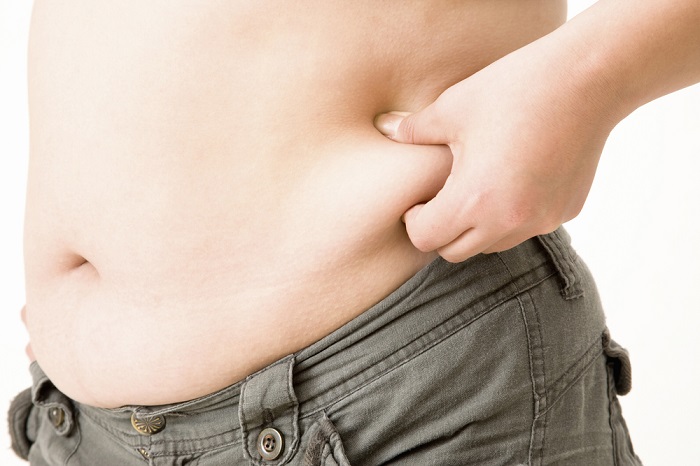Burning localized fat and achieving a well-shaped body is the desire of many women. To lose weight in a healthy way, it is necessary a diet prepared by a nutritionist and invest in the practice of aerobic physical exercises associated with toning and that help burn localized fats since these facts are resistant to all types of diets and must be treated adequately.
Where localized fats are deposited?
Another concern for men and women alike is localized fats, or local fat deposits, which are resistant to diet and exercise. These deposits are found in the subcutaneous fat just under the skin which is different from the visceral fat found in the peritoneal cavity lining various organs (stomach, liver, intestines, kidneys, etc.).
Localized fat deposits are found in the lower abdomen, outer thighs and areas of the body where the appearance and formation of cellulite is more prone.
Because these deposits tend to be resistant to exercise and diet, many people become discouraged when their efforts fail to eliminate localized fats. There is a growing demand in the market for the treatment of these resistant fat deposits and a great business opportunity for doctors.
Each of us stores localized fats in places that are genetically predetermined or conditioned by hormones. That is why most of us have bodies similar to our parents or grandparents. There is no known way to change the way this fat is distributed. And you can’t selectively burn fat with exercise or diet.
You can exercise and lose weight, but genetics determine the areas where you will store fatter and that fat cannot be eliminated only by working that area, since the fat of the whole body is consumed when exercising and generally the parts are thinned first. with less localized fat even though you are not working that area.
Avoid the formation of localized fats
One of the ways to combat localized fats is by preventing them from forming, in this way you will save all the work. But it is not always easy to know how to adapt the best diet, exercise and good lifestyle plan to prevent localized fats from forming.
One of the main points is the correct diet.
Fats that you should avoid in your diet
There are two main types of potentially harmful fats to avoid, fat that is mostly saturated and fat that contains trans fats:
Saturated fat
Saturated fat is a type of fat that comes primarily from animal sources, such as red meat, poultry, and high-fat dairy products. Saturated fat increases whole blood cholesterol and low-density lipoprotein levels, which can increase your risk for cardiovascular disease. Saturated fat can also increase the risk of type 2 diabetes .
Trans fats
This is a type of fat that occurs naturally in some foods in small amounts, but most trans fats are made from oils through a food processing method called partial hydrogenation.
Studies show that these partially hydrogenated trans fats can increase bad LDL cholesterol and lower good HDL cholesterol. This can increase your risk of cardiovascular disease.
Most fats that are high in saturated fat or contain trans fats are solid at room temperature. Because of this, these trans fats are present in beef fat, pork fat, and stick margarine. Avoiding these foods will also help you avoid the accumulation of localized fats in any part of the body.
Fats from a healthy diet
The potentially helpful types of dietary fats are mostly unsaturated fats:
Monounsaturated fat
Monounsaturated fat is found in a variety of foods and oils. Studies show that eating foods high in monounsaturated fat (MUFA) improves blood cholesterol levels, which can lower your risk of heart disease. Research also shows that these fats can benefit insulin levels and blood sugar control, which can be especially helpful if you have type 2 diabetes.
Polyunsaturated fat
This is a type of fat found mainly in plant-based foods and oils. Evidence shows that the consumption of foods rich in polyunsaturated fats (PUFA) improves blood cholesterol levels, the consumption of this type of fats can prevent the formation of localized fats.
Omega 3 fatty acids
One type of polyunsaturated fat is made up mostly of omega 3 fatty acids and can be especially beneficial for your heart. Omega 3 is found in some types of fatty fish, and it can lower the risk of coronary artery disease. It can also protect against irregular heartbeats and help improve blood pressure levels . There are plant sources of omega-3 fatty acids. However, the body does not convert them and uses it as it does with the omega-3 fatty acids in fish.
Exercise and diet program
If you want to lose belly fat , you need a balanced diet and exercise program for yourself. You have to put your body in such a state, so that your hormones can mobilize the fat stores. But how is this done?
Your diet must be calorie-deficient, and it has to be centered around improving insulin sensitivity so that hormones can mobilize fat. As your insulin sensitivity improves, you need less and less insulin to transport glucose from carbohydrates (and proteins) into your cells. As insulin levels are lowered, the body is able to release fatty acids. You cannot do this when insulin levels are high, as insulin is a storage hormone.
Other treatments to eliminate localized fat
Manual lymphatic drainage: Another excellent alternative for those looking to shape the body and lose weight, is lymphatic drainage. This option reduces swelling due to fluid retention and eliminates cellulite. The process is carried out in several alternate sessions to achieve better results.
Now that you know the myth of fat loss targeting and why it is physiologically impossible to shed fat from a specific location, stop planning your workouts around where you want to lose the fat. Instead, you should focus on being consistent, balanced, getting plenty of exercise, and making sure you’re eating the right foods to put your body in a fat-burning state.







